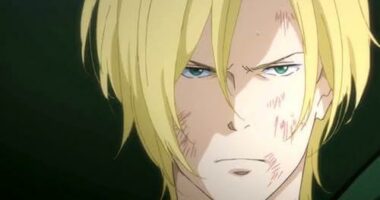Share this @internewscast.com
Ed Croft, the founder and chief executive of Stockopedia, explains how to avoid being the kind of share-picker who takes punts on stocks that often fail and become an investor who uses craft to earn reliable returns instead.
If you’re anything like me, you probably didn’t start investing with a perfectly thought through plan.
You may have looked at fund managers and thought you could do better.
Maybe you invested in funds, but were disappointed by the results. You wanted more control, higher returns, a bit more risk.
So you started picking shares. And that’s where the trouble begins. Let me talk you through the four stages of share-picking and how to go from being a Gambler to a Craftsman.

The four stages of investing, according to Ed Croft, as share-pickers move up from gambling on hot tips, to crafting returns using good information and research
Stage 1: The Gambler – betting on a big idea
This is how many of us start. We come across a share tip, from a broker or a bulletin board, maybe an overconfident YouTuber. We find a convincing idea. We want in.
Sometimes it works, but often the theme has already played out by the time you buy in. You don’t even know you’re late.
This isn’t investing. It’s gambling on hope, which too often ends with a loss – yes of capital, but also of confidence, which can be hard to rebuild.
Stage 2: The Follower – trusting authority After a few bets fail, you smarten up.
You start following people who actually know what they’re doing. People you respect. Premium content. Expert Newsletters. Communities of proven investors. This is definitely a step up. The very best investing insights are often shared by real investors, investing their own money.
But even here, there are traps. Because following others isn’t the same as doing analysis. You risk just buying the story. We are all hard-wired to believe in stories. They are how we make sense of the world.
We seek story arcs in our investments – a viable turnaround plan, a heroic new CEO, a market that must be disrupted.
But Nassim Taleb warned of the ‘narrative fallacy’ in Fooled by Randomness – we see patterns where they really don’t exist, stories where there’s only noise.
So if you find yourself, or the experts you follow, projecting a Hollywood ending onto your favourite share, while ignoring the red flags – buyer beware.
It really can pay to be a sceptic.
Ready to put this strategy to the test? Try Stockopedia free for 14 days and get 25% off your first subscription as a This Is Money reader

Ed Croft is the founder and chief executive of Stockopedia.
Stage 3: The Researcher – digging deeper
So now you take your investing seriously. You learn to read financial statements. You source broker research and annual reports. You study investing books and create spreadsheets. You are doing the real work now.
You feel smarter. But even now, there’s a catch – doing more research doesn’t guarantee better results.
There’s a study from 1973 by Paul Slovic. He asked horse racing experts to predict winners when given increasing amounts of data. At up to five data points on each horse, their accuracy improved.
Beyond that? Their confidence kept increasing, but their accuracy completely flatlined. It’s a hard to swallow truth – more research makes us more confident, not more correct.
So if you find yourself doing hours of research and becoming more and more convinced in your convictions – just remember that confirmation bias can be really expensive.
I’ve been there. In 2008, just before the financial crisis, I had 50 per cent of my portfolio in a single AIM-listed biometrics stock. I’d done the work: bought the product, built the DCF, met the CEO. I ‘knew’ it would multibag.
Just give me ten minutes with my younger self and I’ll save him hundreds of thousands of pounds.

Stage 4: The Craftsman – turning insights into rules
So when you’ve done your fair share of gambling, following, and over-researching – you may reach a point where you stop asking ‘what do I think about this stock?’ and start asking ‘what really works in the market?’ It’s a subtle shift, but it’s everything.
Most of the great investors made this shift. Graham. Buffett. Slater. O’Shaughnessy. They didn’t just gather information – they defined investment criteria based on the evidence of what really works.
Because when you start researching what really works – across all markets in history – there are only a few core return drivers that consistently pay off.
● Quality – good, profitable stocks tend to outperform unprofitable, junk.
● Value – cheap stocks (versus earnings or assets) tend to outperform expensive stocks.
● Momentum – shares with positive price and earnings trends tend to outperform.

There are only a few core return drivers that consistently pay off
Not every stock with these characteristics succeeds, but on average, investing in shares with these key characteristics shifts the odds in your favour.
The study below is by Fama & French – Fama won the Nobel Prize for validating these insights. Understanding this is where the shift happens. The Craftsman moves from stock-picking based on opinion, to rule-building based on evidence.
These three characteristics, which we call QVM, are measurable for every share. And when something can be measured, then rules, criteria and checklists can be built on them. They can be the basis of a sound, repeatable process.
Even Charlie Munger, Warren Buffett’s partner, and one of the wealthiest stock market researchers that ever lived once said: ‘No wise pilot, no matter how great his talent and experience, fails to use his checklist.’
Because what sets the best investors apart isn’t how much they know about their investments – it’s how they turn their knowledge of what really works into a repeatable process.
What’s next?
This first article is really about recognising the journey that many of us investors go on – from gambler to follower to researcher to craftsman.
In the next article of this four-article series, I’ll show you how to start turning the QVM return drivers into practical rules you can apply to improve your investing.
This article is part of Stockopedia’s The Smart Money Playbook series. As a special offer This is Money readers can get 25 per cent off a Stockopedia membership.
DIY INVESTING PLATFORMS
AJ Bell

AJ Bell
Easy investing and ready-made portfolios
Hargreaves Lansdown

Hargreaves Lansdown
Free fund dealing and investment ideas
interactive investor

interactive investor
Flat-fee investing from £4.99 per month
InvestEngine

InvestEngine
Account and trading fee-free ETF investing
Trading 212
Trading 212
Free share dealing and no account fee
Affiliate links: If you take out a product This is Money may earn a commission. These deals are chosen by our editorial team, as we think they are worth highlighting. This does not affect our editorial independence.
Compare the best investing account for you













